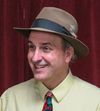Brewery Days
San Francisco's Acme beer and ale: gone but not forgotten.

Welcome and thanks to new Friends of Woody, Brian S., Lorraine L., Jeff B., and Nick W.! Let’s get together soon.
We San Franciscans are somewhere in the 12 stages of grief about the closure of the Anchor Brewing Company. (Since bottles remain on store shelves and on sale at bars, I’m still only somewhere between anger and bargaining.)
I cheered up somewhat during a recent coffee with friend Julie O’Keefe, who shared a few brewery-related snapshots from her family archive. The photo below is her father, Stephen Norris, who for more than 35 years was head mechanic at another yeasty San Francisco institution, Acme Breweries.
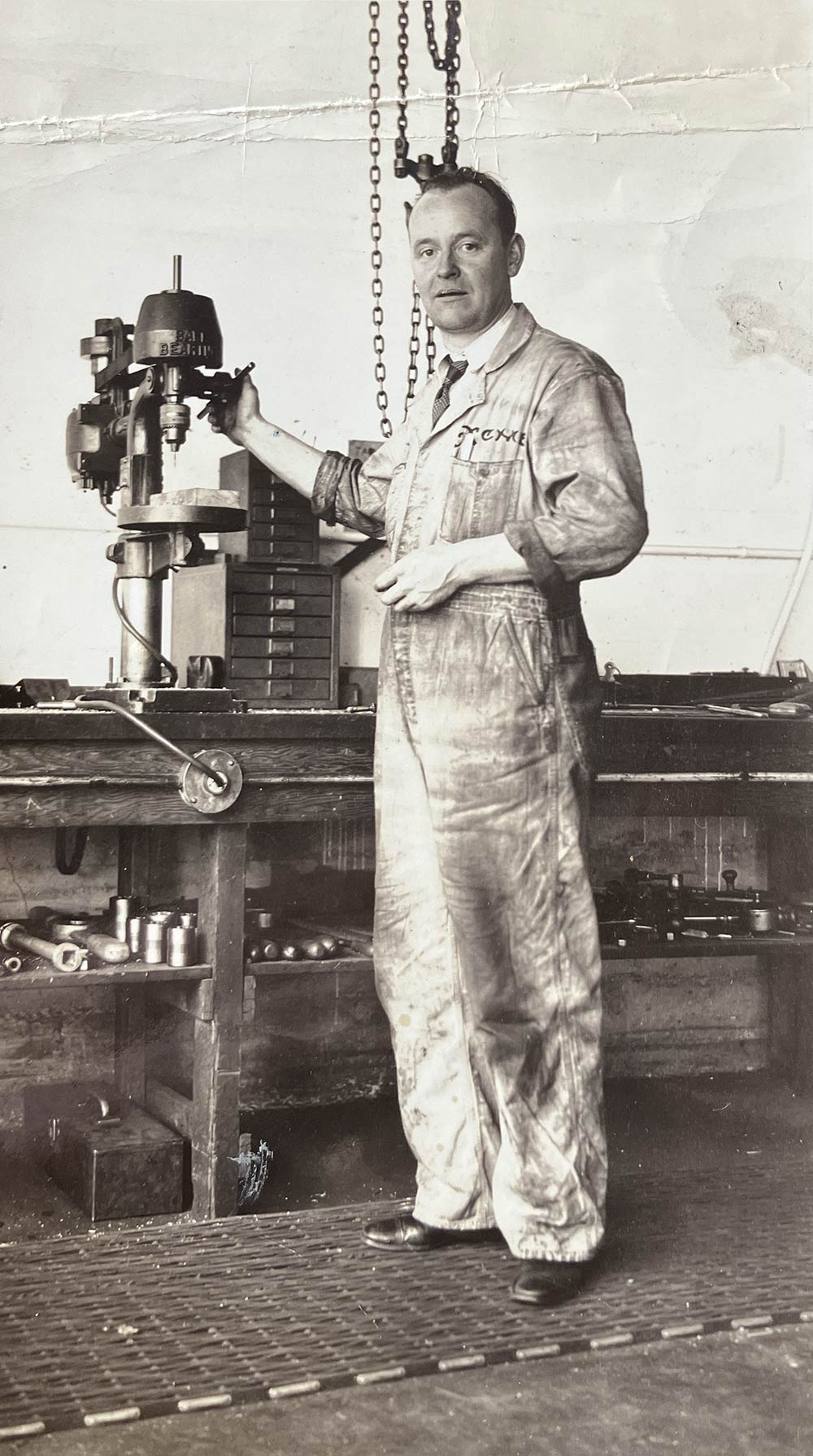
Like Anchor, Acme was a San Francisco original, but its parentage traced to Washington State and the Olympia Brewing Company. Owner Leopold F. Schmidt opened an agency and bottle works for Olympia at the foot of Telegraph Hill in late 1904. The 1906 earthquake and fire wiped out most of San Francisco’s beer production, so Schmidt, seeing an opportunity, established a new brewery and brand on Sansome Street.
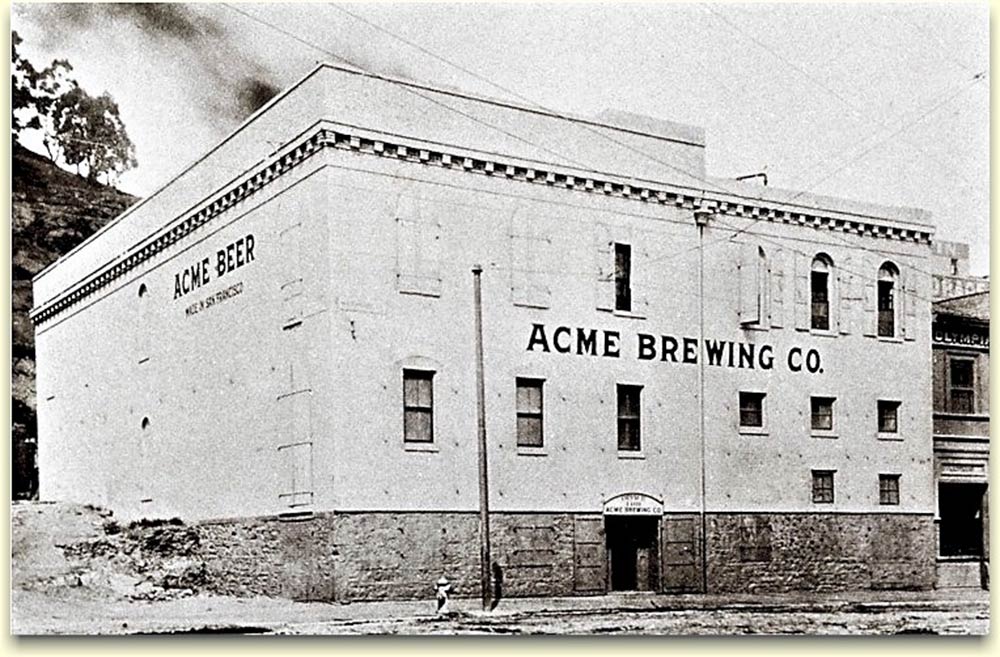
Julie’s father, an Irish immigrant, started at Acme when he was just 21 years old and worked his way up. He was with Acme through the Prohibition years, when the company had to switch to making ice cream and “healthful beverages,” such as low-alcohol-content beer and soft drinks. Luckily, a mechanic is helpful in any kind of factory or plant.
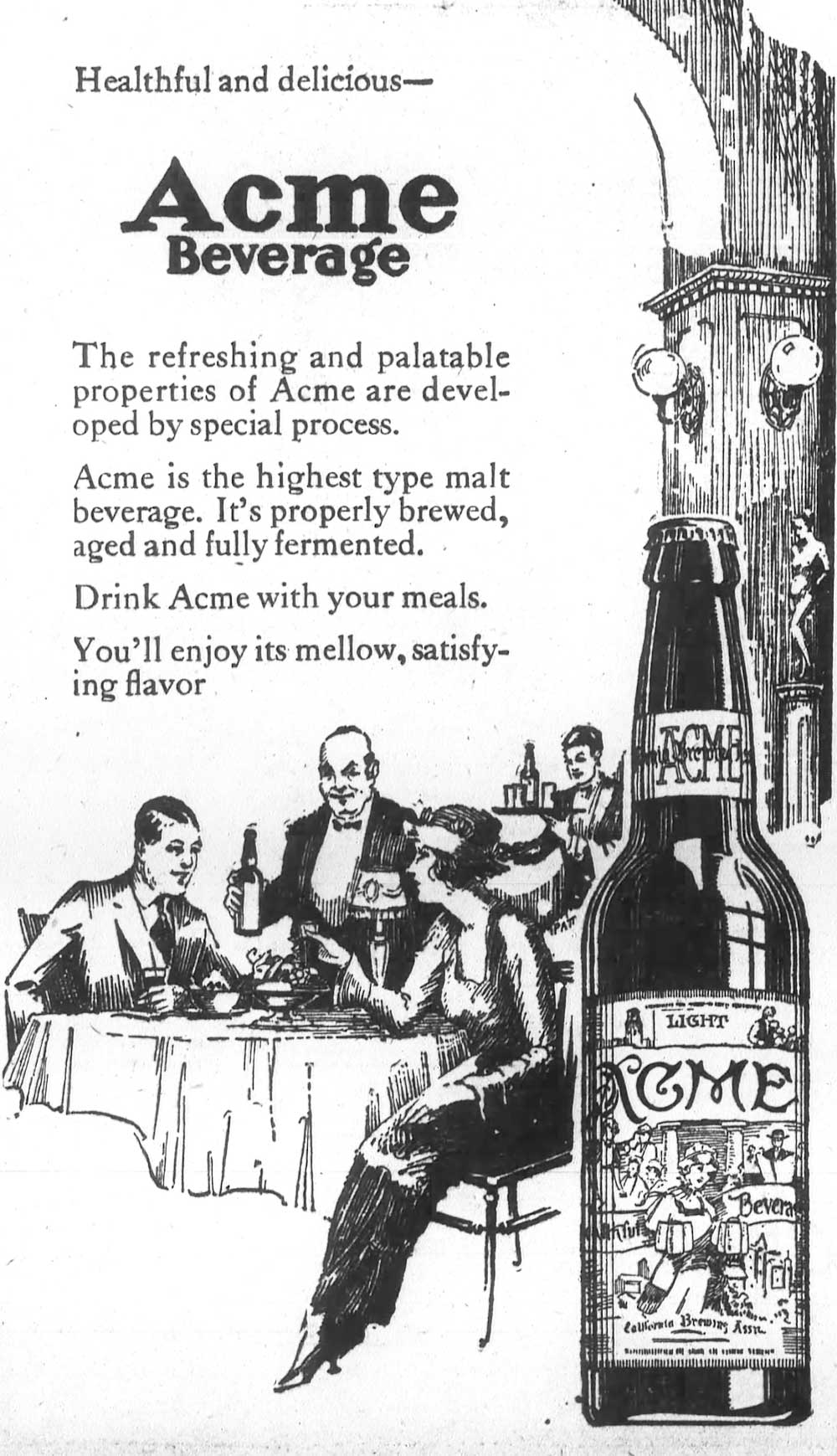
Breweries once operated in many different neighborhoods of San Francisco: North Beach, Russian Hill, South of Market, the eastern waterfront, and the Mission District. The last place Mr. Norris worked for Acme (under its associated name of California Brewing) was in the Western Addition, a complex around Fulton and Webster Streets which included a familiar building still standing today.
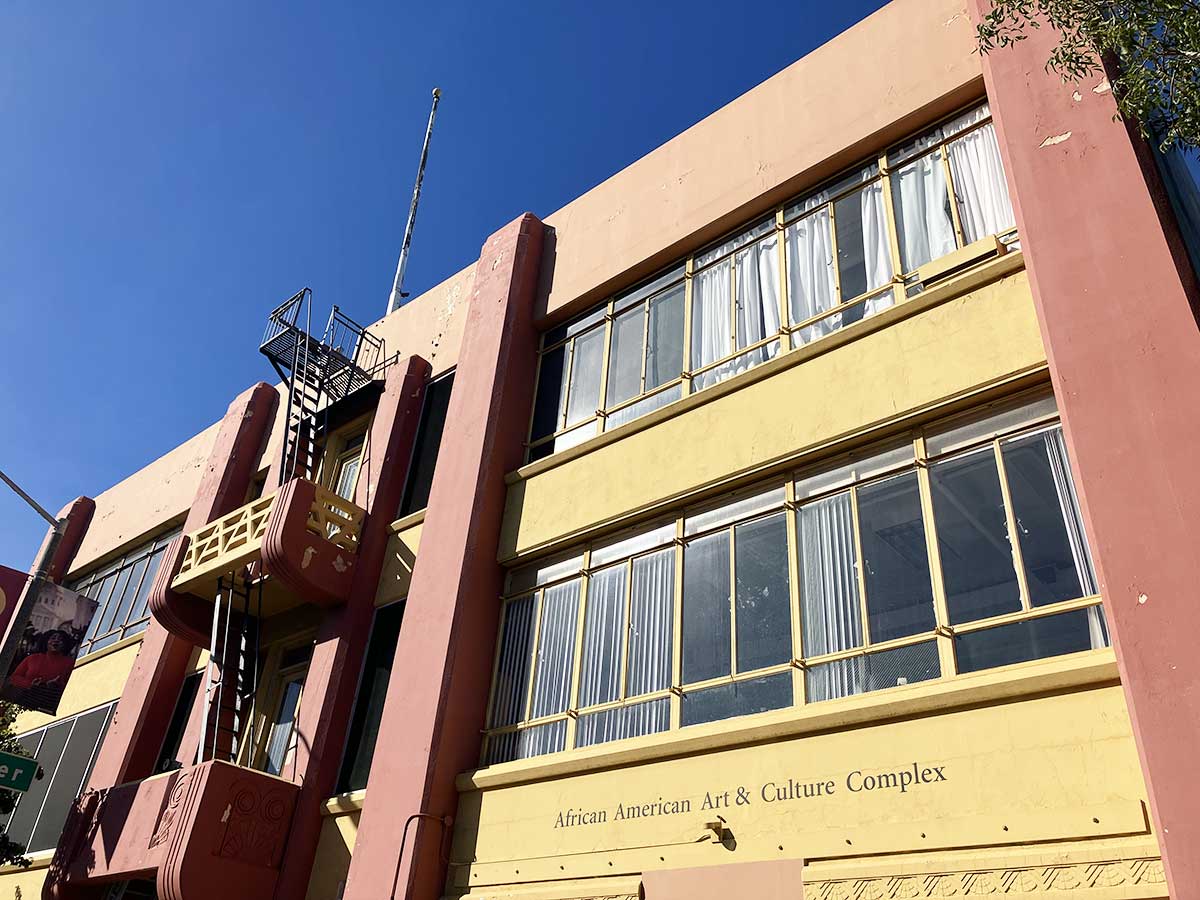
The African American Art & Culture building at 762 Fulton Street is a survivor of the redevelopment era of the 1950s and 1960s, when dozens of city blocks were razed for public housing and “urban renewal.” The Art Deco bits are tip offs to its 1935 construction.
I had never thought about what the building had been before the cultural center was established, until I saw this snapshot from Julie’s collection:

After my coffee with Julie, I went straight to Gary Flynn’s great website on breweriana, and, of course, he had all the dope on Acme, including the building at 762 Fulton Street, which was constructed in 1935 as offices and tasting room:
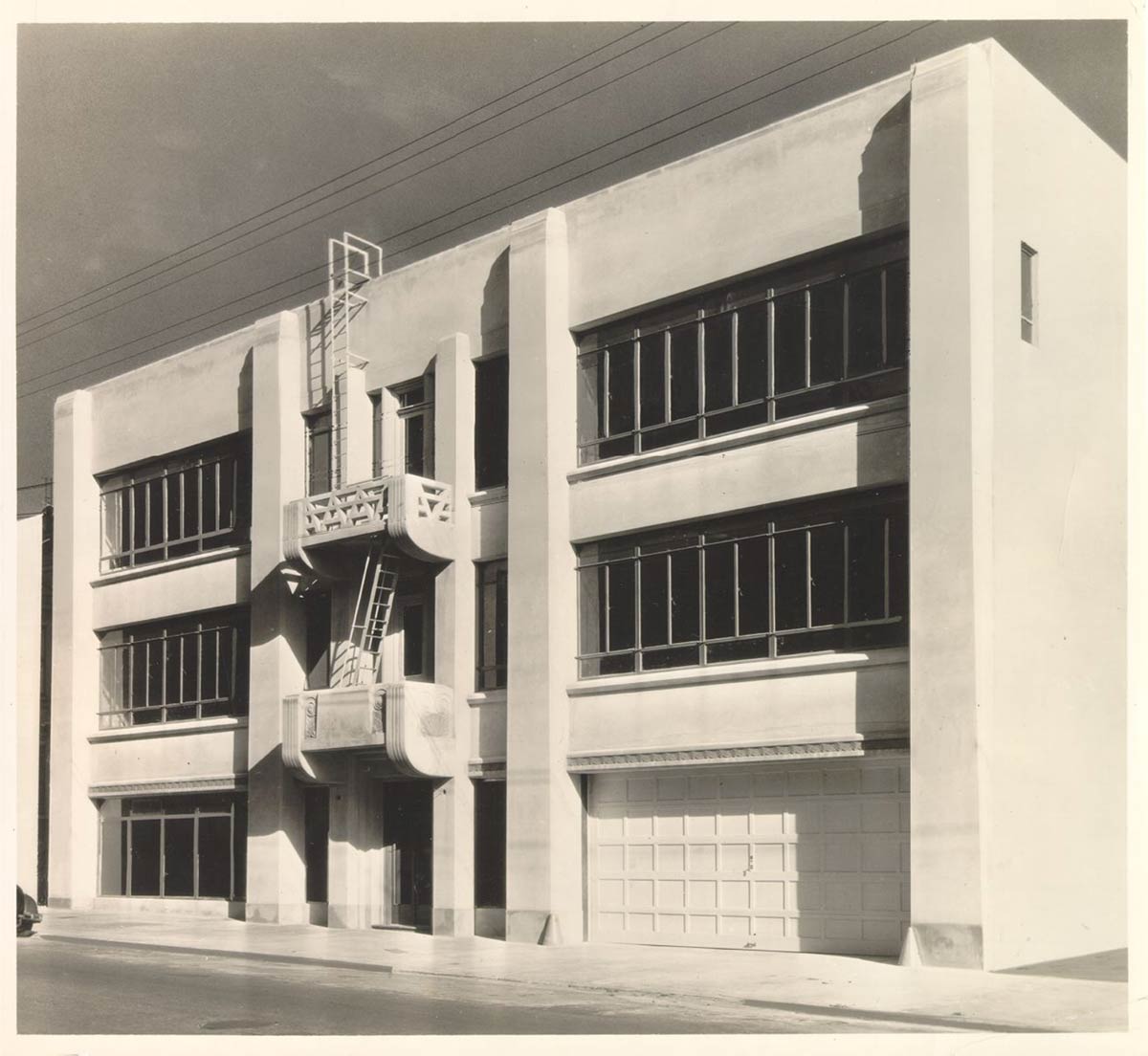
What didn’t survive of Acme’s campus was the sleek 1941 bottling plant which stood at Buchanan and Grove streets. Check this beauty out:
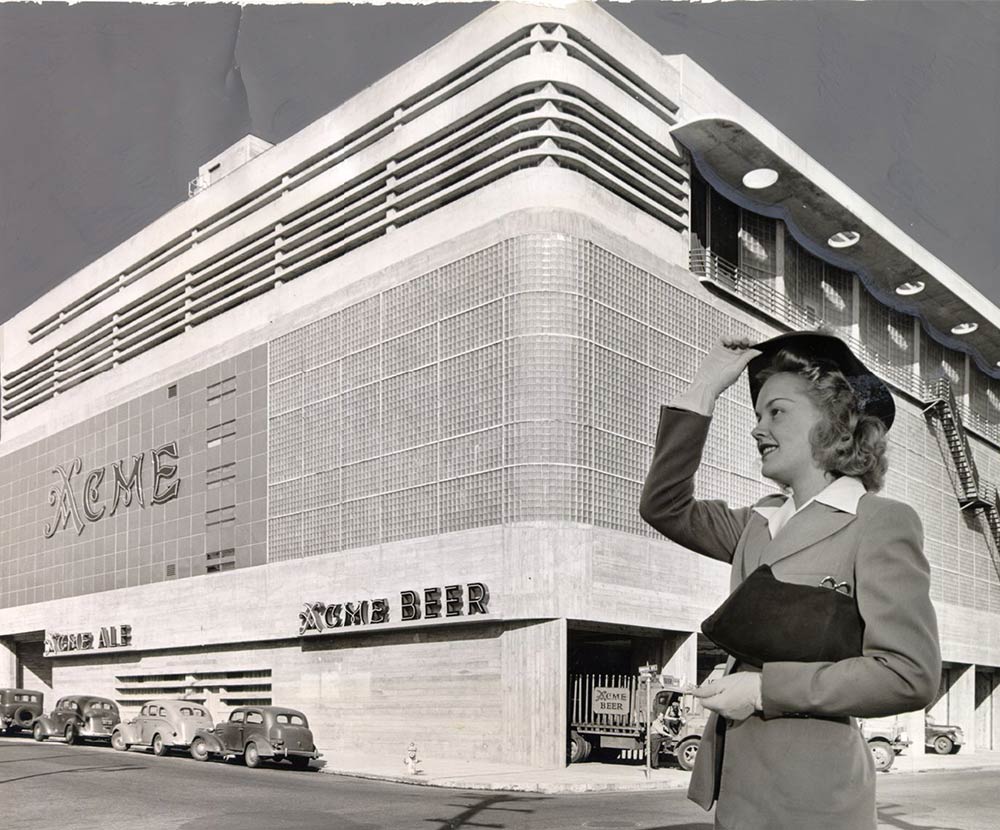
To attract women drinkers, Acme for a short time advertised beer as a diet drink:
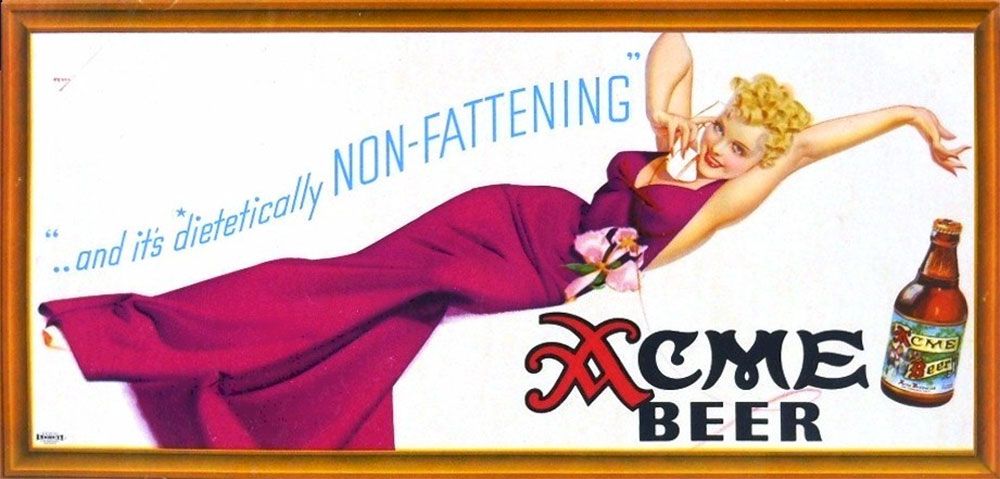
In the early 1950s, the company produced Bull Dog beer, the beer for “a man’s taste.” Julie has a snap of a delivery truck advertising it.
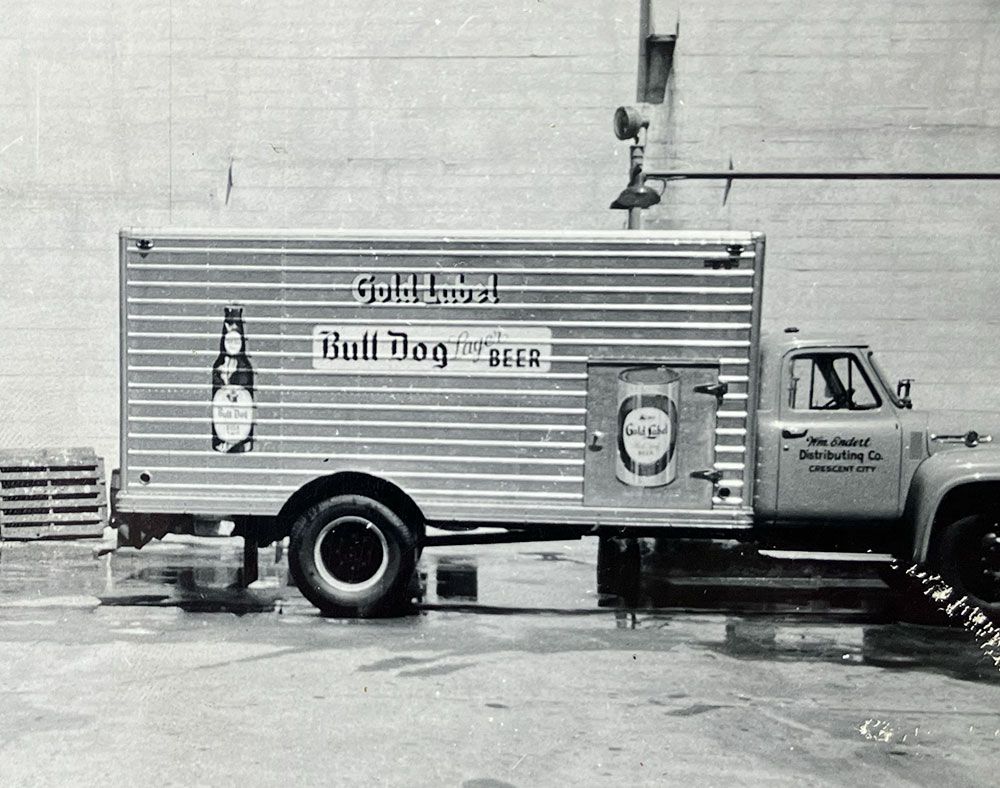
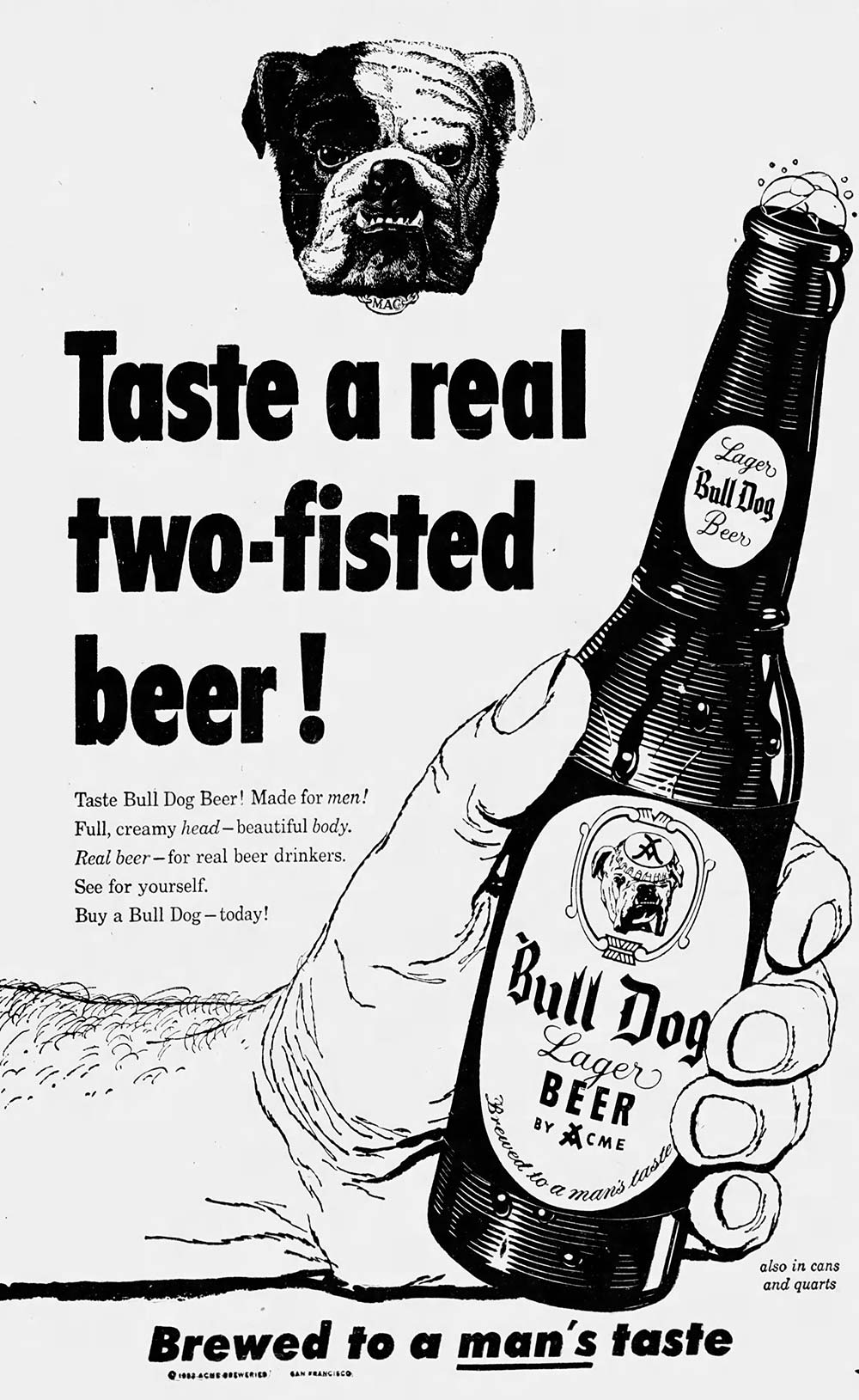
Anchor’s recent demise began with its acquisition by Sapporo in 2017. Acme’s end was similarly precipitated by a sale to out-of-towners. A New York brewery purchased Acme’s California works in 1954.
By 1958, the Western Addition plant was closed and Julie’s father was out of a job. He worked as a truck driver for Hamm’s brewing for a short time before finding another mechanic’s job with the City and County of San Francisco. Norris worked in the police department, the fire department, and public works before his retirement.
The Acme name lives on. The North Coast Brewing Company of Fort Bragg, California, acquired the rights to the brand in the 1990s and periodically produces pale ales with the signature red-A Acme logo. I’m overdue for a road trip up the coast to see if they’re still on tap.
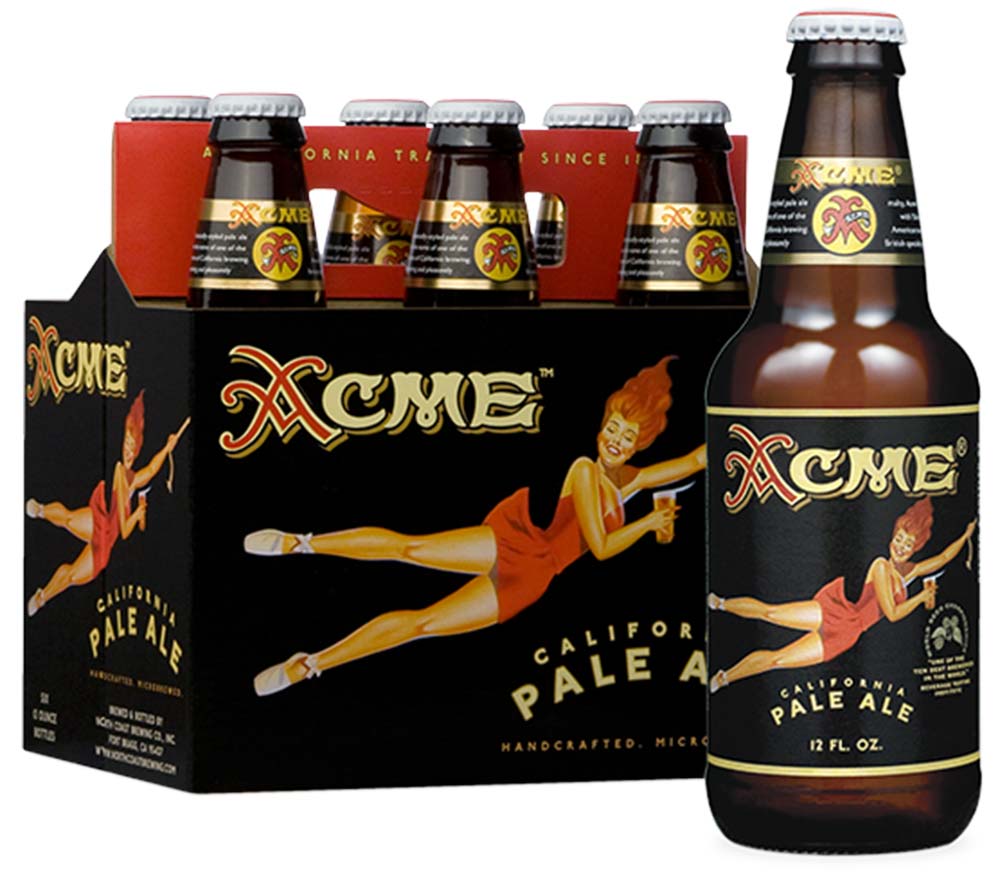
Woody Beer and Coffee Fund

Speaking of beverages... thanks to all who contribute to getting me out and seeing people face-to-face via the Woody Beer and Coffee Fund. Sometimes, as with Julie, I get to see old family photos as a bonus. Chip in, if you're able, and let me know when I can buy you a drink!

